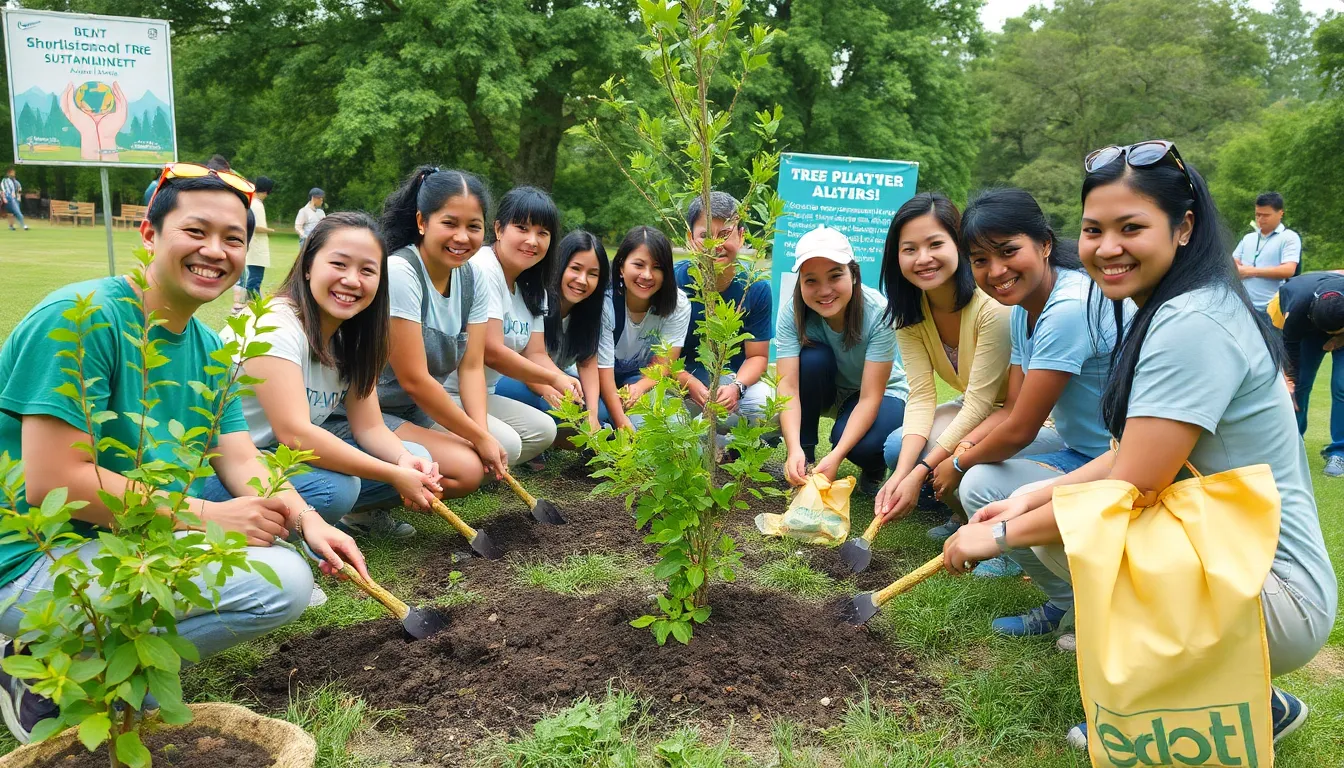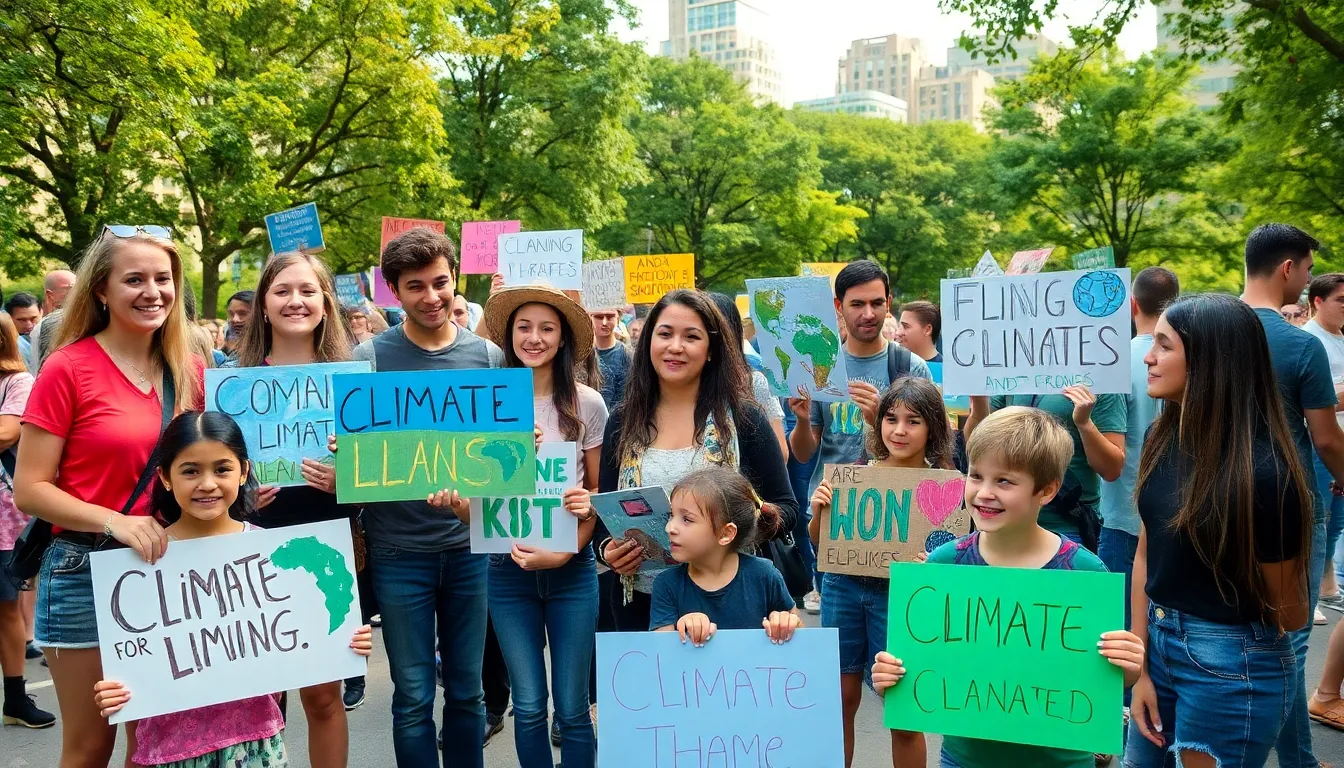In a world where the ice caps are melting faster than your last ice cream cone on a summer day, climate action groups are stepping up to save the planet—one recycled bottle at a time. These passionate warriors are on a mission to tackle climate change, rallying communities and inspiring individuals to join the fight. With humor and determination, they show that saving the Earth doesn’t have to be all doom and gloom.
From local clean-up events to global protests, these groups blend activism with a splash of fun. They’re not just about serious discussions and policy changes; they know how to engage hearts and minds, proving that a little laughter can go a long way in serious matters. Join the movement and discover how these climate champions are making a difference, one quirky campaign at a time.
Table of Contents
ToggleOverview of Climate Action Groups
Climate action groups play a crucial role in addressing climate change. They mobilize communities through various initiatives, aiming for environmental sustainability and awareness.
Definition and Purpose
Climate action groups are organizations focused on combating climate change. They work at local, national, and global levels to promote policies that reduce carbon emissions and enhance environmental protection. These groups organize events, campaigns, and educational programs to inspire individuals and communities to engage in sustainable practices. Their primary purpose involves advocating for climate justice, highlighting the connections between climate change and social equity.
Importance in Today’s World
The importance of climate action groups in today’s world cannot be overstated. They address urgent environmental issues, fostering collaboration among diverse stakeholders. These organizations raise awareness about the impact of climate change on ecosystems and human health, leading to increased public engagement. Their efforts contribute to policy changes by influencing lawmakers, calling for stricter environmental regulations, and promoting renewable energy sources. In a time of climate crisis, such groups empower individuals to take action, demonstrating that collective efforts can lead to meaningful change.
Types of Climate Action Groups

Various climate action groups exist, each playing a significant role in the fight against climate change. These organizations operate at local, national, and international levels, adapting their strategies to address different challenges.
Local Community Organizations
Local community organizations focus on grassroots initiatives. They organize events like tree planting, clean-up drives, and educational workshops. Engaging residents fosters a sense of ownership toward environmental issues. Examples include neighborhood associations promoting recycling programs and school-based groups that advocate for sustainability. These efforts often lead to immediate, tangible improvements in local environments. By connecting people directly with nature, local groups inspire collective action.
National Networks
National networks unite various local organizations under a common agenda. These entities share resources and amplify their collective voice to influence policy. Notable examples include the Sierra Club and 350.org, which advocate for climate-related legislation across the country. They often develop campaigns addressing issues like fossil fuel dependency and renewable energy incentives. Cohesion among these networks strengthens advocacy efforts, allowing for wider outreach and education on pressing environmental challenges.
International Coalitions
International coalitions bring together organizations from multiple nations to address global climate issues. The Climate Action Network and Greenpeace exemplify groups that work on international treaties and agreements. Collaboration enables groups to share best practices and strategies for advocacy. By participating in global summits and negotiations, these coalitions strengthen the momentum for collective action. Their work highlights the interconnectedness of climate challenges and promotes solutions on an international scale.
Strategies Employed by Climate Action Groups
Climate action groups utilize various strategies to address climate change effectively. Their multifaceted approaches engage communities, influence policies, and raise awareness.
Advocacy and Policy Change
Advocating for policy changes stands as a primary focus for climate action groups. They work tirelessly to influence legislators through campaigns and lobbying efforts aimed at promoting sustainable practices. Engaging with policymakers helps these groups highlight urgent climate issues. Organizations like the Sierra Club often mobilize members to contact their representatives. This grassroots pressure can lead to significant shifts in local and national policies. Effective advocacy campaigns include rallying communities to participate in demonstrations and writing petitions. These actions demonstrate public demand for climate action and support new legislation aimed at reducing carbon emissions.
Public Awareness Campaigns
Public awareness campaigns play a crucial role in educating the community about climate issues. Through creative messaging, climate action groups reach diverse audiences. They often utilize social media platforms to share informative content that resonates with younger generations. Campaigns may involve art, storytelling, and workshops that invite public engagement. Collaborating with local artists or influencers amplifies their reach. Engaging narratives raise awareness about the impacts of climate change on health and ecosystems. Furthermore, these campaigns encourage individuals to adopt sustainable practices in their daily lives, cultivating a broader consciousness around environmental issues and the need for collective action.
Grassroots Mobilization
Grassroots mobilization empowers communities to take direct action. Local organizations often encourage residents to participate in initiatives such as clean-ups and tree planting. These hands-on activities foster a sense of ownership and responsibility toward the environment. Communication between local groups strengthens networks and builds momentum. Collaborative events raise awareness and enhance the visibility of climate causes. Mobilization efforts can also include organizing workshops on sustainable living. Educational sessions equip individuals with knowledge and tools to reduce their environmental footprint. By inspiring collective action at the local level, climate action groups create a robust movement capable of enacting real change.
Notable Climate Action Groups
Numerous climate action groups actively address environmental challenges across various levels. These organizations range from grassroots initiatives to international coalitions, each with unique missions and approaches.
Group Profiles
Sierra Club stands out as one of the oldest and largest environmental organizations in the United States. Founded in 1892, it focuses on promoting clean energy and protecting public lands. 350.org, established in 2008, mobilizes grassroots efforts to reduce carbon dioxide levels to 350 parts per million. Greenpeace champions direct action and advocacy worldwide to halt environmental degradation. Climate Action Network unites over 1,300 members globally, working collaboratively to advance climate justice.
Achievements and Impact
Sierra Club’s campaigns played a key role in securing the establishment of protected areas, promoting renewable energy policies. 350.org successfully organized global climate strikes, engaging millions in climate advocacy. Greenpeace’s efforts resulted in significant legislative changes, including bans on single-use plastics in numerous countries. Climate Action Network influences international climate agreements, strengthening commitments to reduce greenhouse gas emissions.
Challenges Facing Climate Action Groups
Climate action groups encounter several challenges that impact their effectiveness and outreach.
Funding and Resources
Funding gaps hinder many organizations’ operations. Limited financial support restricts the ability to scale initiatives. Securing grants and donations remains critical for sustaining projects. Resource allocation involves competing priorities, making efficient use of funds essential. Many groups rely on crowdfunding and community support to bridge these gaps. Challenges in obtaining consistent funding can stall ongoing programs, impacting community engagement and outreach.
Political Opposition
Political landscapes often present challenges for climate action groups. Many face opposition from influential stakeholders who resist environmental regulations. Legislative roadblocks impede progress toward climate goals. In some cases, misinformation campaigns target these groups, attempting to discredit their initiatives. Navigating political resistance requires strategic advocacy and coalition-building among like-minded organizations. Continuous efforts to raise awareness of scientific consensus on climate change help counteract these political hurdles.
Public Perception
Public perception also poses a significant challenge for climate action groups. Misunderstandings about climate science can lead to skepticism around their initiatives. Some communities may view these groups as overly radical or disconnected from local concerns. Engaging with diverse audiences through inclusive messaging is essential. Connection with local issues often mitigates perceptions of elitism and fosters support. High-profile campaigns that engage citizens in fun, relatable ways can change attitudes and build stronger community involvement.
The dedication and creativity of climate action groups play a vital role in the fight against climate change. By combining serious advocacy with engaging initiatives they inspire communities to take part in environmental stewardship. Their diverse strategies not only raise awareness but also empower individuals to make a tangible impact.
As these groups continue to navigate challenges they face a promising future fueled by collaboration and innovation. With each local clean-up and global protest they remind everyone that meaningful change is possible and enjoyable. Together they’re fostering a movement that champions a healthier planet for generations to come.


